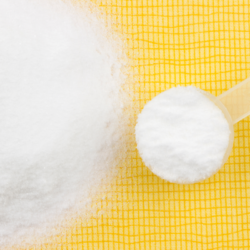Fatty acids play a fundamental role in maintaining human health. Among them, pentadecanoic acid, known as C15:0, has recently attracted the attention of scientists for its exceptional properties. This odd saturated fatty acid, although present in small quantities in dairy products and certain meats, is considered an essential nutrient with notable protective effects on metabolic, cardiovascular and liver health.
Which foods contain C15 fatty acids?
Pentadecanoic acid (C15:0) is an odd saturated fatty acid, known for its chemical stability, which is superior to polyunsaturated fatty acids such as omega-3. This characteristic gives it a fundamental role in strengthening cell membranes and protecting against lipid peroxidation, a process that is harmful to cells.
From a nutritional point of view, C15:0 is mainly present in foods of animal origin. Its main sources are whole dairy products (milk, butter, cheese) and ruminant meat (beef, lamb). It is also found in smaller quantities in certain fish and specific plants, although these contributions are secondary to animal sources. Incorporating these foods into the diet can help maintain optimal levels of C15:0, which is essential for supporting various metabolic and cellular processes.
What are the benefits of C15 fatty acids?
The mechanisms of action of C15:0 largely explain its clinical benefits. This odd saturated lipid activates essential biological pathways while inhibiting deleterious processes, playing a key role in the prevention and management of many chronic diseases.
Energy and metabolic regulation
The activation of AMPK by C15:0 can be compared to the action of an intelligent thermostat for cellular energy. Just as a thermostat regulates the temperature of a room by adjusting the heating or air conditioning as required, AMPK detects the energy levels in the cells and adjusts their metabolism accordingly.
When activated, AMPK causes cells to burn more fat for energy, while improving the response to insulin, the key hormone that regulates blood sugar levels. This process is crucial in preventing blood sugar spikes, a common problem in people with type 2 diabetes or metabolic disorders. In other words, C15:0 helps cells to make better use of their energy resources, while maintaining a healthy balance.
Slowing down the ageing process
Inhibition of the mTOR pathway by C15:0 works a bit like cruise control in a car. When this system is over-activated, cells ‘speed up’ their growth and division in an uncontrolled manner, which can lead to cell damage and even serious diseases such as cancer and neurodegenerative disorders.
By slowing down this pathway, C15:0 slows down age-related cellular deterioration, enabling cells to function more stably and over a longer period of time.
This promotes healthy longevity by delaying the onset of chronic diseases associated with ageing. In other words, C15:0 helps keep cells in ‘energy-saving mode’, reducing wear and tear and extending their lifespan.
Cardiovascular support
C15:0 ‘s role in cardiovascular support can be compared to that of a maintenance technician for blood vessels. By reducing levels of LDL cholesterol (often called ‘bad cholesterol’) and triglycerides, it helps prevent the build-up of fatty deposits on artery walls, rather like a technician who regularly cleans pipes to prevent blockages.
At the same time, C15:0 improves endothelial function, the inner layer of blood vessels, which acts as a traffic regulator to ensure good blood circulation. This action is essential for maintaining supple, responsive vessels, thereby reducing the risk of developing serious conditions such as atherosclerosis (hardening of the arteries) or strokes.
Anti-inflammatory and antifibrotic
Inhibition of HDAC6 by C15:0 acts as a cellular mediator, helping to regulate the body’s inflammatory responses. When inflammation becomes chronic, it can cause lasting damage to tissues, just as an alarm that remains constantly on ends up causing more stress than benefit. By calming this response, C15:0 helps to limit persistent inflammation, reducing the risk of long-term damage.
In addition, C15:0 prevents excessive tissue scarring, a process known as fibrosis, where tissues become rigid and dysfunctional. This action is particularly important in vital organs such as the lungs and liver, where fibrosis can seriously compromise their function. As a result, C15:0 plays a key role in preventing lung fibrosis and liver disease, helping to maintain healthy, functional tissues.
How should C15 fatty acids be taken?
A daily intake of 100 to 300 mg of C15:0 is suggested to maintain optimal concentrations in plasma. The main sources include whole dairy products, certain ruminant meats and specific nutritional supplements.
Accumulating evidence suggests that C15:0 pentadecanoic acid is a key nutrient for human health, offering multiple benefits ranging from cardiovascular protection to improving metabolism and promoting longevity. Incorporating C15:0 into the diet could play a crucial role in the prevention of chronic diseases and healthy ageing.
Read more:
- Venn-Watson, S.; Schork, N.J. Pentadecanoic Acid (C15:0), an Essential Fatty Acid, Shares Clinically Relevant Cell-Based Activities with Leading Longevity-Enhancing Compounds. Nutrients 2023, 15, 4607. https://doi.org/10.3390/nu15214607
- Venn-Watson SK, Butterworth CN (2022) Broader and safer clinically-relevant activities of pentadecanoic acid compared to omega-3: Evaluation of an emerging essential fatty acid across twelve primary human cell-based disease systems.





